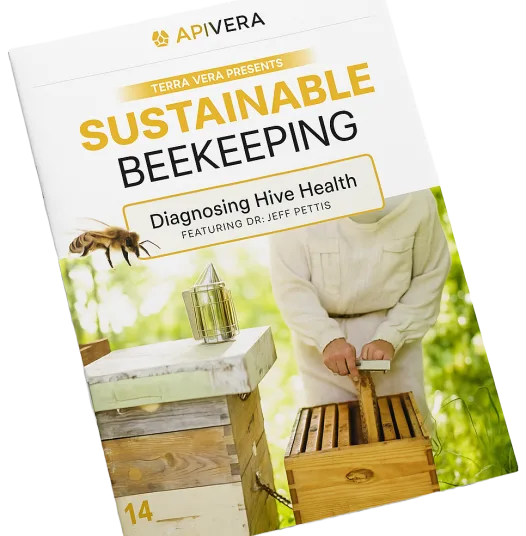In 2025, the U.S. beekeeping industry faced its worst recorded colony loss—driven not only by the Varroa mite itself, but by a far more dangerous development: chemical resistance.
For decades, miticides like amitraz have been the industry standard for controlling Varroa destructor, the parasitic mite responsible for spreading lethal viruses like DWV (Deformed Wing Virus). But just like antibiotic resistance in humans, overuse and repetition of the same chemical tools have led to a new threat: Varroa mites that no longer respond to traditional treatments.
What’s Happening in the Hive?
According to the USDA Agricultural Research Service, the 2025 losses were linked to amitraz-resistant mites transmitting dangerously high viral loads of DWV-A, DWV-B, and acute bee paralysis virus. Mite counts in many hives weren’t unusually high—but the viruses they carried were more aggressive and devastating than ever.
This is a warning sign. The tools we've relied on are breaking down. Even diligent beekeepers—those who monitor, rotate treatments, and follow all the best practices—are finding that amitraz simply isn’t working anymore.





The Vicious Cycle of Resistance
Here's how resistance builds:
- Repeated use of the same miticide → selective pressure favors mites that can survive.
- Surviving mites reproduce → resistant populations multiply quickly.
- Mites become harder to control → beekeepers increase dosage or frequency.
- Bees suffer more stress → colony health declines even if mites are “managed.”
The result? An arms race the bees are losing.
ApiVera: A Break from the Traditional Cycle
ApiVera was designed with this very moment in mind. Instead of relying on synthetic miticides with known resistance issues, ApiVera uses amino acid technology that:
✅ Bypasses conventional resistance pathways
Varroa mites haven’t shown resistance to ApiVera’s unique biochemistry, which works differently than neurotoxic treatments like amitraz. ApiVera’s mode of action lyses the cell membrane of pests and pathogens.
✅ Supports bee health while targeting mites
ApiVera’s foggable formulas are gentle on bees—even when used during vulnerable periods like brood rearing or after transport.
✅ Enables rotation and mitigation strategies
By offering an alternative, ApiVera gives beekeepers a way to rotate off amitraz and preserve what limited efficacy remains in conventional tools.
What Beekeepers Can Do Now
- Test for resistance: If your mite levels aren’t dropping after amitraz use, resistance could be the culprit.
- Incorporate alternative treatments: Use biological and non-synthetic tools like ApiVera to diversify your mite control strategy.
- Strengthen hives against viruses: Even low mite counts can cause high DWV loads if your bees are stressed. Nutritional support and immune resilience matter.
Change is here. The good news? So are better options.
ApiVera isn’t just a product—it’s part of a broader shift toward sustainable, science-backed beekeeping practices that move beyond the one-size-fits-all miticide model. As resistance continues to rise, beekeepers deserve tools that evolve with the threat—and protect the pollinators that make our food system possible.
Learn more about how ApiVera is helping beekeepers stay ahead of resistance: terravera.com/beekeepers.
